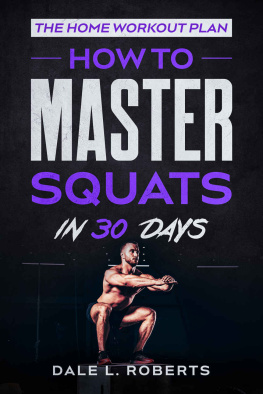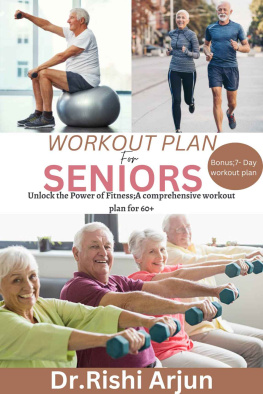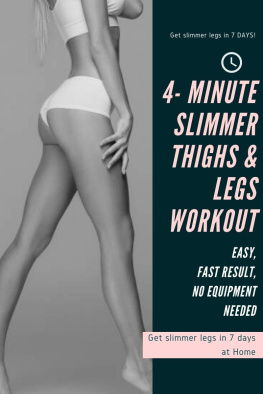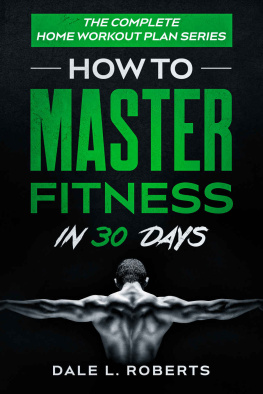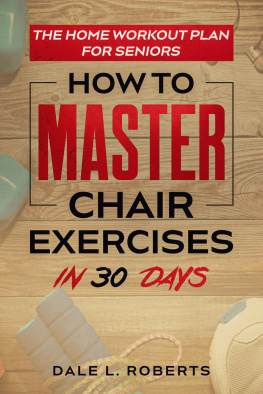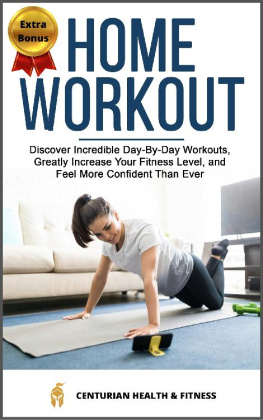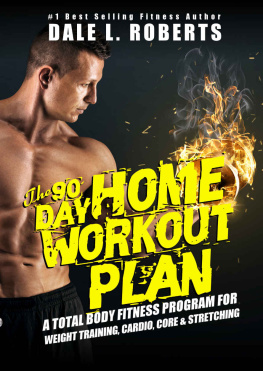By Dale L. Roberts
This book proposes a program of exercise and nutrition recommendations. However, all readers should consult a qualified medical professional before starting this or any other health & fitness program. As with any exercise or diet program, if you experience any discomfort, pain, or duress of any sort, stop immediately and consult your physician. The creators, producers, participants, advertisers, and distributors of this program disclaim any liabilities or losses in connection with the exercises or advice herein. Any equipment or workout area used should be thoroughly inspected in advance as free of danger, flaw, or compromise. The user assumes all responsibility when performing any movements contained in this book and waives the equipment manufacturer, makers, and distributors of the equipment of all liabilities.
And become part of the cool kids clubmore info at the link above.
Introduction
I am always blown away by the lack of leg training in the gym these days, especially guys. Maybe I never noticed it before I was 100% devoted to fitness, but I am all-too-aware of how people infrequently train their legs. Hey, Im not completely guiltless in this issue either. When I dont hit my legs consistently, Ill notice toothpicks growing from my feet and chicken wing-sized thighs to match. If I ever take a week off from leg training, I begin getting near panic-induced attacks of body dysmorphia.
Why hit the legs, you ask? Your legs are what support the rest of your body. And they hold the key to most anything you want to achieve in fitness. Without the good, strong foundation upholding your upper body, then the rest of your training is a true waste of time. Its like having donut spare tires on an Escalade - no good!
What if you dont have the time or luxury of a gym to train your legs? Well then squat, damn it! In The Home Workout Plan: How to Master Leg Exercises in 30 Days , I offered a more comprehensive approach to leg training that requires a bit more time, attention, and energy. However, I thought Id completely devote a book to the king of all bodyweight exercises, the squats. The squat workouts can be done within 11-15 minutes, so you wont have much of an excuse to miss a single workout over the 30-day period.
Whether your goal is to lose weight, put on muscle, or maintain your physique, the most crucial exercise in any workout plan should include squatting as a priority. Why do I cover squatting so much? Squats burn more calories than most other exercises more muscle in the legs require more calories for use. Adding muscle to your legs will only increase your results throughout the rest of your body.
For ease of use and access to equipment, Ive limited the squats in this book to bodyweight exercises only. That way, you wont need to find a gym or even have to leave your house. The Home Workout Plan: How to Master Squats in 30 Day s can be used almost anywhere, at any time, and at most fitness levels. There are a few guidelines to when you exercise, such as:
- Breathe in as you go down, breathe in as you come up.
- Never sacrifice form for bragging rights. Just because you completed it poorly, does not mean you broke any world records. Believe me, its all been done before.
- When in doubt, try it out. You may surprise yourself on what you can accomplish.
- If you can do it, then prove it. Im a big proponent of high repetition exercises. Try 100 repetitions, and if you are successful, please share it!
You are ready to move forward if you can easily squat 50-100 times. Most everyone could use squats to build a solid foundation and improve their overall health. Now that you have a small yet effective tool to reference in The Home Workout Plan: How to Master Squats in 30 Day s, you can start to shake up your current routine or start working out through the power of squats. Enjoy!
The Secret to High-Quality Squats in Every Workout
Foam Rolling
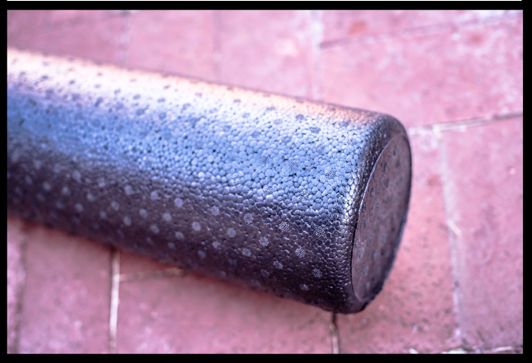
This is a book about squats. So why the heck would I even cover any exercise other than the squat, much less an exercise tool. The fact is I could simply provide you a simple progression of squats and send you on your way. However, I dont believe youd get the biggest bang for your buck in your squat workout plan. Enter the foam roller, the fitness tool thats going to take your squatting ability to the next level.
A foam roller enhances most any workout and is especially true for The Home Workout Plan: How to Master Squats in 30 Days . Use a foam roller for self-myofascial release (SMR), a form of self-massage. Myo- means muscle and -fascia refers to the connective tissue that wraps and bundles muscle together. A myofascial adhesion, or scar tissue, is caused by stress, training, overuse, under-use, movement imbalances or injuries .
Foam rolling is like massaging yourself. With some of your body weight on the foam roller, you roll over the knotted muscle. In essence, you break up trigger points and soothe tight fascia while increasing blood flow and circulation to the area .
How to Foam Roll
Depending on the size of a knot and the tightness of the muscle, SMR can be uncomfortable or mildly painful at worst. If you experience any pain, lift a little pressure. Immediately stop if you experience any sharp pain and consult your family doctor.
Get into position and ease your weight onto the foam roller. Gently roll away from your feet, and then toward your head. As you move, take note of the toughest area or the knots in the muscle. Hold position over the knot for 20-30 seconds. You may have some discomfort. If it becomes painful, lift some pressure from the area. Too much pressure will not allow the area to relax. Once the area has relaxed, roll above, below, and then through the knot 5-10 times each.
There are different types of foam rollers, varying in density. Choose a softer low-density foam roller until you comfortably perform the exercises in this book. Switch to a thicker density foam roller when you feel fewer benefits from the low-density foam roller. Many companies manufacture at least three varieties in soft, medium, and hard density foam rollers. A thicker density does not indicate physical superiority, nor does it break any world records. If you find a foam roller density works for you, then keep using it.
Some people need a hard foam roller on some areas, but a lower density foam roller on other more delicate areas. For instance, I use a thick density foam roller on my back but have to use a softer density on my tight outer thighs. A thicker density foam roller doesnt work on an excessively tight area since the muscle wont relax.
You may feel an immediate difference after your first use. And, with consistent use of the foam roller, you may help relieve problematic areas and eliminate chronic adhesions. Prioritize your time on problem areas and then focus on other areas you plan to work during your exercise routine or sporting activity.
Evidence has shown foam rolling is best used after any exercise routine or activity for its benefits. In March 2001, the National Strength and Conditioning Association conducted three studies on the effects of foam rolling on performance, recovery, range of motion, and blood flow. The first test was on the impact of foam rolling on performance and recovery. Surprisingly, the study showed foam rolling had no impact on performance when done before an exercise. However, the test proved fatigue and recovery were improved by using a foam roller after exercise.

